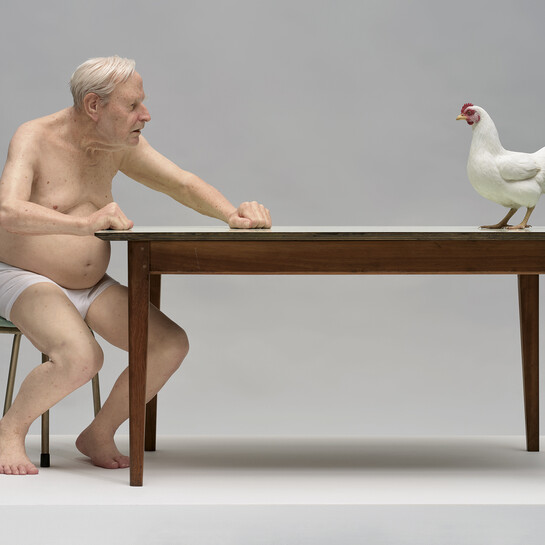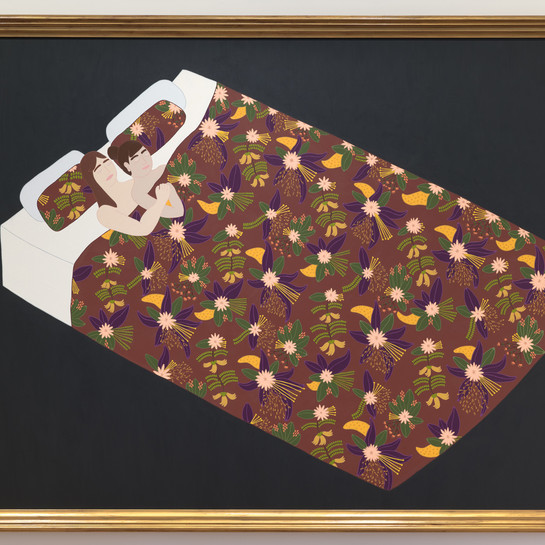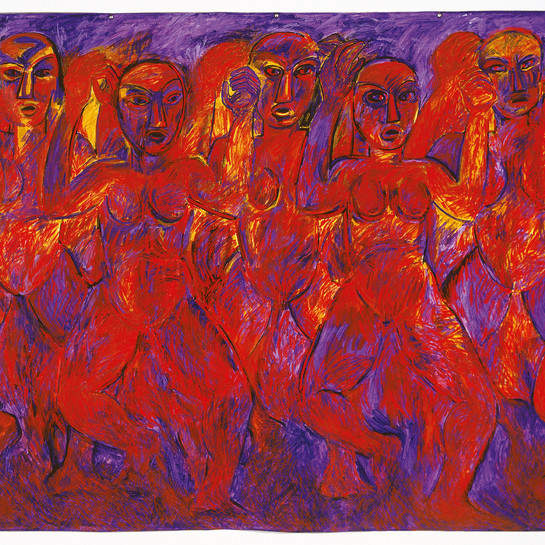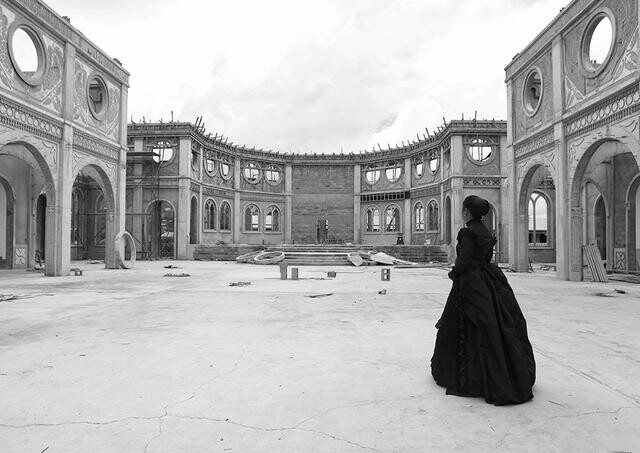Yuki Kihara
Samoa /
Aotearoa New Zealand, b.1975
Sāmoan,
Pasifika,
Japanese
Roman Catholic Church, Apia (2013)
- 2013
- C-print
- Purchased 2017
- 843 x 1088mm
- 2017/064
Location: Touring Gallery A
Tags: arches, black (color), buildings (structures), churches (buildings), circles (plane figures), dresses (garments), monochrome, people (agents), religious buildings, women (female humans)
Yuki Kihara has developed a persona called Salome who often appears in her work – named for the biblical figure who, Kihara notes, influenced politics through dance. In these photographs, Salome, dressed in constricting Victorian clothes, gazes out to sea and on the ruined interior of the Roman Catholic Church in Apia following the devastation of Cyclone Evan in 2012. The viewer’s gaze is directed by Salome: through her quiet strength and indelible presence, we are invited to consider the effects of colonialism on Sāmoan culture.Kihara describes herself as Fa’afafine – a person within indigenous Sāmoan society who ‘does in the manner of a woman’; loosely translated as being ‘transgender’ in the Western context. Kihara’s Salome exists in the vā – which can be understood as a realm that transcends space and time, a place in which relationships between people and things are established. As the poet Albert Wendt writes, the vā is ‘not a space that separates but relates, that holds separate entities and things together in the Unity-that-is-All, the space that is context, giving meaning to things.’
(We do this, 12 May 2018 - 26 May 2019)




